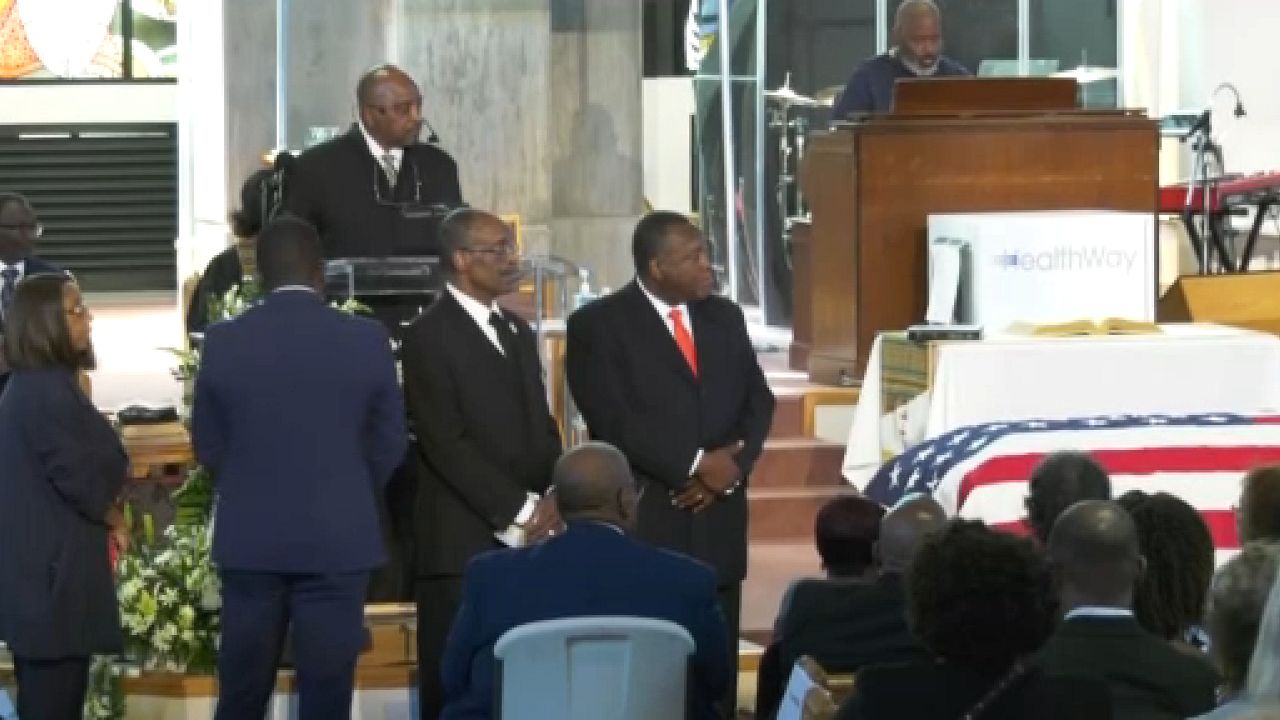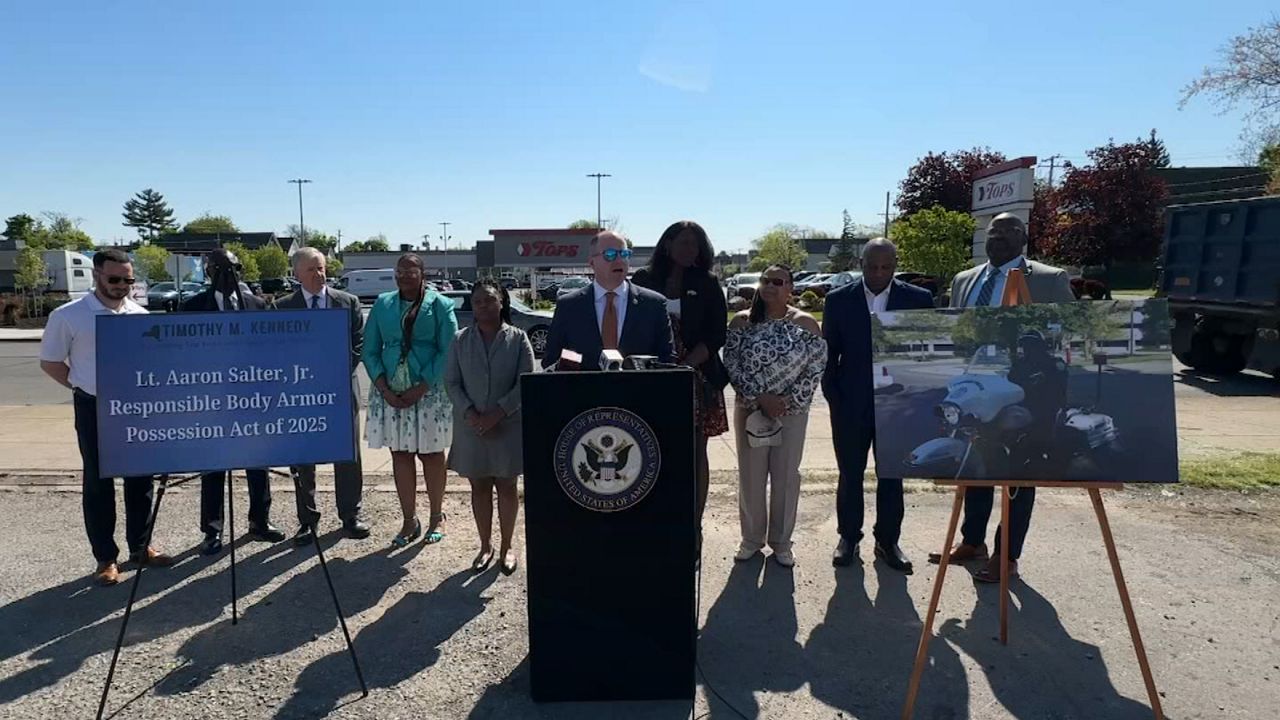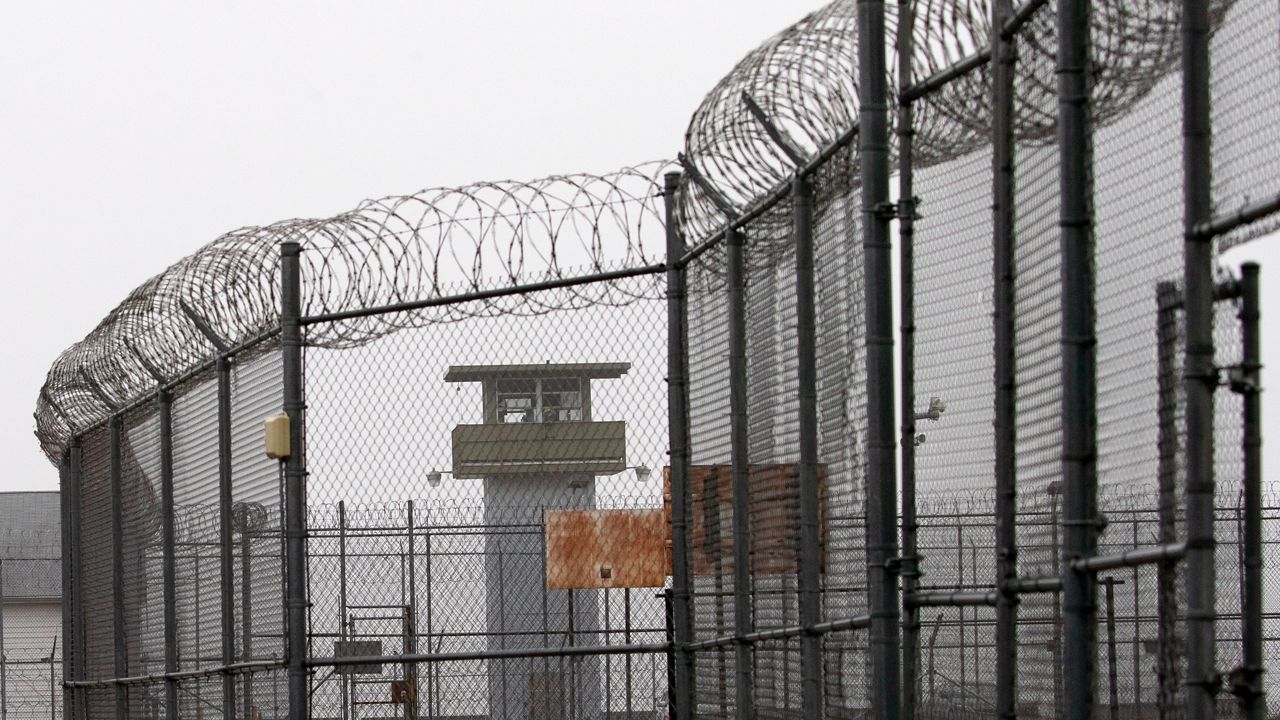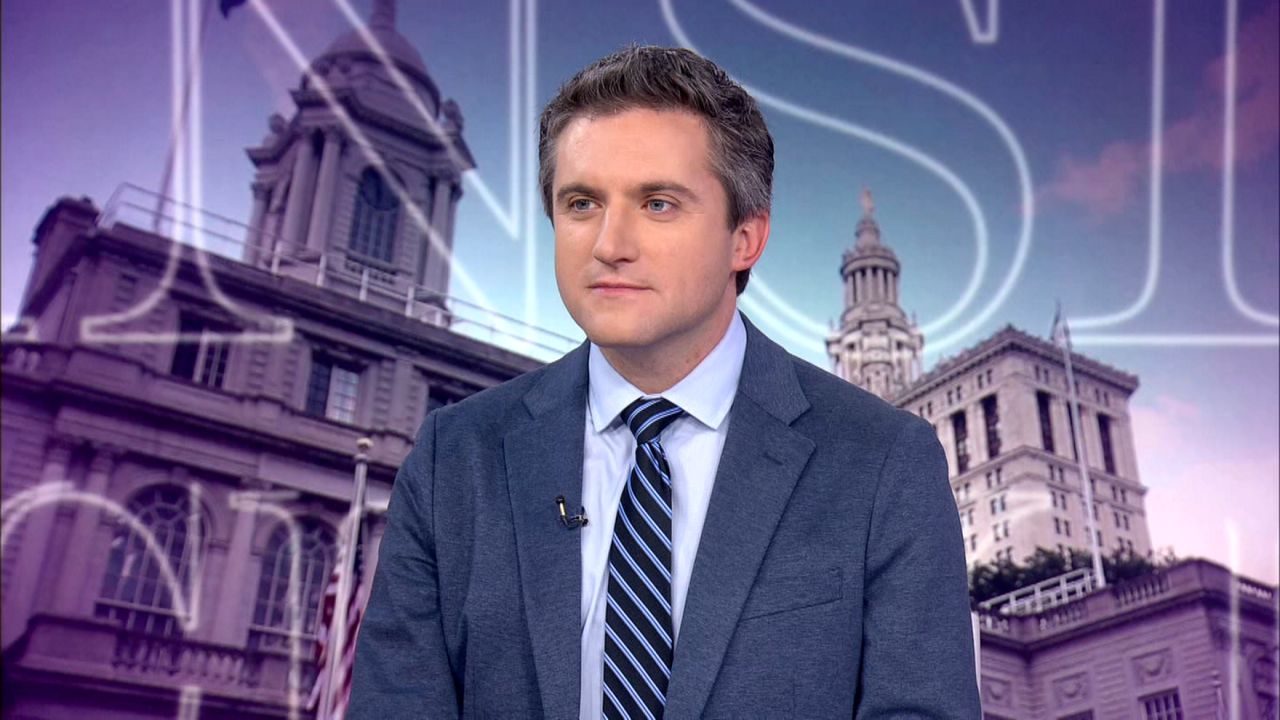As Gov. Kathy Hochul celebrates a decline in shootings in New York, crediting law enforcement and the help they've received through a state program, police in Western New York on Monday said while the program works, improving public safety across the state will require legislative changes.
The state budget included $36 million for the Gun Involved Violence Elimination program, which helps 28 police departments in 21 counties outside New York City pinpoint the cause and quell gun violence in upstate communities.
Shooting incidents have declined 32% and 35% in Syracuse and Rochester, respectively, for the first seven months of 2024 — compared to the same seven-month period last year. Shootings declined 57% in Yonkers, by 56% in Nassau County and 50% in Suffolk County.
“Keeping New Yorkers safe is my top priority,” Hochul said about the program last week. “Our comprehensive efforts to bring down gun violence are working – and I’ll never stop fighting to ensure safe communities all across our state.”
Hochul has kept focus on declining gun crimes with public safety at top-of-mind for New York voters, and Republicans push the message that recent criminal justice policies have made the state less safe.
Shootings peaked in the state in 2021 with 715 incidents through July that year, compared to 351 so far this year to date — a decrease of 51%, according to the state Division of Criminal Justice Services.
"We support prosecution, probation departments, sheriffs and then municipal police departments, and we incentivize their use of evidence-based strategies to reduce violent crime," DCJS Executive Deputy Commissioner Joe Popcun told Spectrum News 1. "Before the pandemic, we had had remarkable success in driving down shootings to their lowest levels and I'm happy to share we've returned to those pre-pandemic lows in shooting activity."
And fewer people overall have died from gun crimes — with 60 fewer shooting deaths statewide so far this year compared to the same time in 2021.
Monroe County Sheriff Todd Baxter said the SNUG street outreach program within GIVE has reduced Rochester's cycle of violence.
"We've detained hundreds of people on gun charges here in Monroe County... and we couldn't do that without the GIVE resources," Baxter said Monday. "Whether it's overtime for extra deputies and patrol officers and troopers or whether that's the actual crime analysis center being able to have the money and funds to do their work."
While most New York communities are back to their pre-pandemic levels of violence, others have seen a recent uptick in gun crimes compared to last year.
The most recent DCJS July data shows shootings that result in injury have increased in certain communities, including the cities of Albany, Buffalo and Poughkeepsie.
Popcun said gun violence decreased and leveled out in areas like Buffalo last year, driving the increase.
But Baxter said other crimes, like stolen vehicles and retail theft, remain elevated.
He cited a Rochester crash earlier this week where a 17-year-old, who had been arrested a dozen times in the last year while on parole, struck and killed a 92-year-old man while allegedly driving a stolen vehicle.
The sheriff added the city of Rochester averaged 35 murders a year prior to the 2019 bail reform changes, but the city has seen 35 murders to date this year — meaning the state's focus on the decline in shooting incidents does not give a full picture of New York's overall culture of crime or lawlessness.
Baxter said state law must be changed back to allow law enforcement to hold a person for carrying an illegal firearm, or higher penalties for repeat offenders — changes made under the state's 2019 bail reform laws.
"We can't detain these people," the Western New York sheriff said. "These are foot chases, these are car chases; these are police officers and bad guys with guns and this is just a recipe for disaster. If we can't detain someone after we go through all that effort to get them in custody with an illegal gun, then what are we doing?"
The sheriff wants small changes to New York's bail law, not a repeal, and said Gov. Hochul has been open to other changes during recent meetings with police.
"We're not asking to go back to where we were on bail reform, we're asking to make small tweaks to it," Baxter said.
But police and DCJS agree more work must be done, and success is rooted in a consistent, holistic strategy.
"There's no one-size-fits-all for any community," Popcun said. "It's really what's the constellation of programs that you can meaningfully participate in that's going to prevent and reduce violence."









